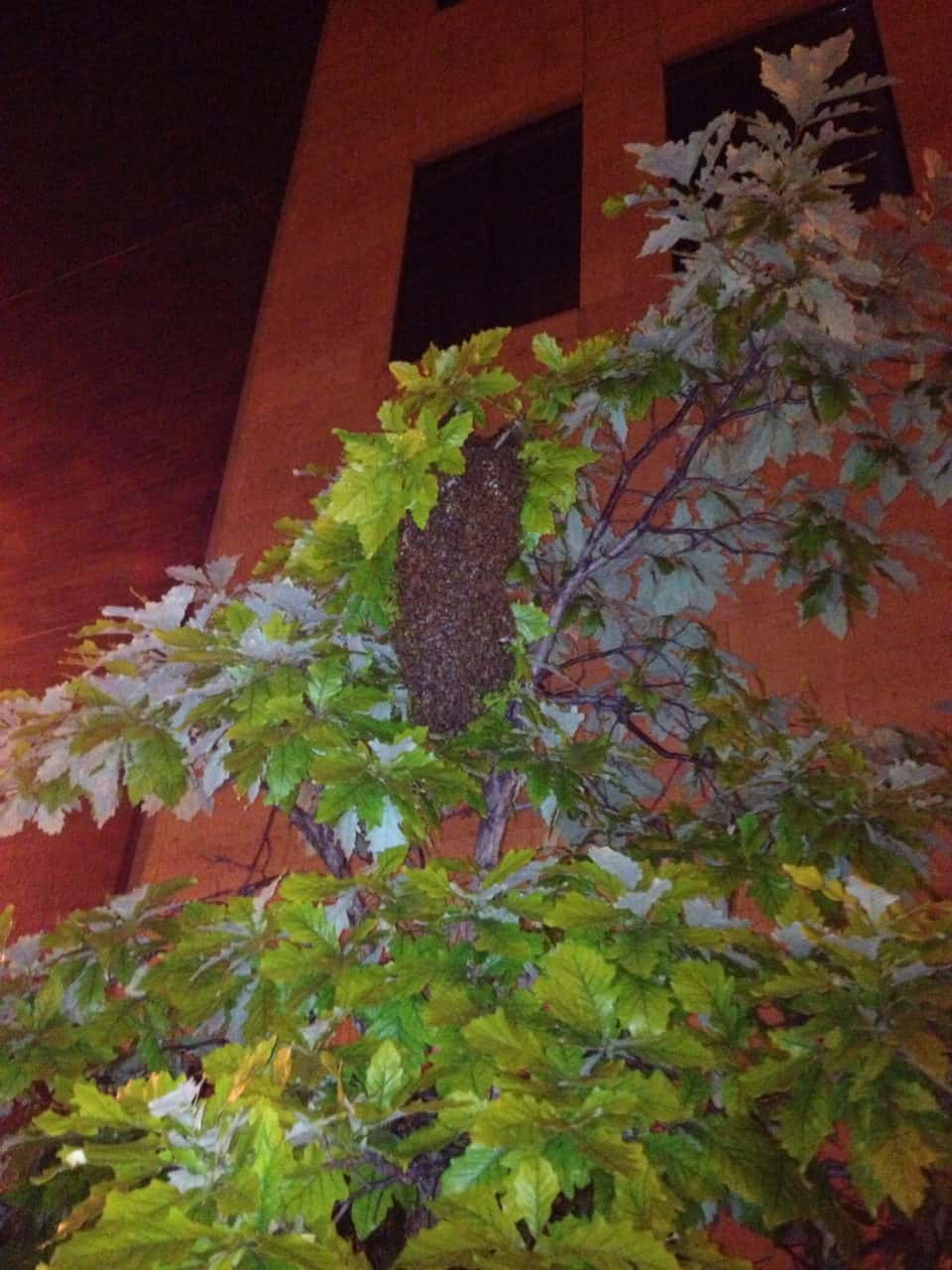You have read my last blog on “why bother to keep records while beekeeping” and you’re convinced. You want to keep records. That’s the attitude! So, how do you keep - good, detailed, relevant, informative, not-too-much-of-a-hassle - record? Short answer: the way you want. Longer answer: You have to pick the method that speaks to you best. Don’t start with too complex a method or you won’t stick to it. If you start by a simple method and notice how it helps you, you will, by yourself, start taking more complex and comprehensives notes. Some beekeepers use a notebook they leave on the hive itself…
Year: 2013
Bee kill in St. Paul, Minnesota UPDATE
UPDATE from this blog. With help from Lucinda Swanson that commented below, we figured out what actually happened to the swarm of bees. There were two swarms that were spotted in Downtown St. Paul at almost midnight on sunday night. Lucinda estimated that both were about the size of her 6 foot tall son's torso. Because it was so late and the night before the Monday morning rush hour, the St. Paul City Police requested that St. Paul Fire remove the bees from the trees. The bees were killed by the fire crew with flame retardent foam. The whole incident was unfortunate, but the city…
Bee Guts
This summer I have had the good fortune of continuing my work in the vanEnglesdorp lab, and I have learned a variety of new techniques for assessing hive health. The one I will be talking about today is a project I have just begun work on- bee autopsies. This may sound gruesome, and maybe it is, but I have thoroughly enjoyed learning how to correctly dissect and evaluate honey bee digestive tract health. This dissection, in the most basic terms, requires that the entire contents of the abdomen be removed and examined. This includes structures from the crop, or honey stomach, all the…
Looking for Tracheal Mites
Here at the UMD BIP lab, I have been looking for tracheal mites (Acarapis woodi) in honey bee samples. Tracheal mites live in the trachea of honey bees, they enter the tracheal tubes through the bee’s spiracles. Once inside the trachea, they puncture the wall of the trachea and feed on the bee’s haemolymph. An obvious sign that bees have a heavy tracheal mite infestation is when the trachea have brown/ dark red scarring. Cloudy trachea can also indicate the presence of mites. Clear trachea are USUALLY a sign of bees without tracheal mites. However, I have found mites in many bees that had clear…
Keeping Records
Every beekeeper is a citizen scientist. Have you noticed how in a beekeeping meeting everyone is sharing tips, experience, and advice? We are all comparing our practices, our successes, our failures. We want to hear about other people mistakes (and learn from them). We want to try their recommendations for ourselves. When taking my beekeeping class, the most repetitive advice that our mentors provided us was to keep detailed records. Not only is it a requirement under Belgium’s legislation for hygiene of food products (yes, we do have legislation for everything in Belgium, that’s one of our oldest traditions, along with beer) but the advantages…
The Transition
The Transition Going from being an undergraduate student only working 6 hours a week on my own independent project to being a full time worker in the Bee Research Lab has been quite a transition. During the semester, a few other undergraduate students and I worked on an independent research project counting individual nosema spores in an attempt to figure out if counting individual spores was more accurate for identifying disease or infection of bees than the traditional 100 bee nosema spore count. Now that I work full time for the lab, I see just how small of a project that really was. …
Bee kill in St. Paul, Minnesota
UPDATE for this blog here. Yesterday morning, a woman and her friend were walking around downtown St. Paul. Next to a couple of small trees they noticed "snowdrifts of dead bees." The woman contacted Dr. Marla Spivak and sent a couple of pictures showing thousands of dead bees. With the huge bee kill that went on in Oregon (read Liz's blog here), we were all really worried something similar was going on. Marla went to investigate early this morning, as did the Minnesota Department of Agriculture. Unluckily, there was a downpour of rain and they weren't able to get a soil sample, but they did get a dead bee and…
Bee Mimics
At a glance can you tell who the imposter is? Honeybee mimics like the drone fly, shown on the above left, have been able to fool many people, especially when you just glance at one out of the corner of your eye. But why does this fly, and other mimics go through the trouble of imitating another organism? How can we easily tell what’s a bee and what’s not? And why would we want to do such a thing anyway? As it turns out mimics of many types exist for many reasons. These include protection from predators, which would be referred to as…
Zombees!
You may remember hearing in the news a while back about the appearance of zombie bees along the west coast of the United States. No, the zombie bees aren't a result from a bio experiment gone wrong, but are honey bees being parasitized by Apocephalus borealis aka the zombie fly. The female fly finds a honey bee (most likely a worker), attaches, and then injects eggs into her abdomen. The eggs hatch into larvae which use the bee as a food source, consuming her organs and other tissues as they mature. During this process the honey bee displays unusual behaviors including flying at night and…
Largest Mass Bumble Bee Death on Record
On the eve of National Pollinator Week the largest mass bumble bee death on record occurred in a Wilsonville, Oregon parking lot. The estimated 50,000 bumble bees found dead in the Target lot had foraged on some fifty-five ornamental linden trees, confirmed by the Oregon Department of Agriculture to have been sprayed with the insecticide dinotefuran, trade name Safari. According to an article from Oregon Public Broadcasting, “The chemical application was intended to kill aphids because they produce a honeydew substance that drops from the trees onto parked cars.” This incident is an example of insecticide misapplication with devastating consequences. A broad-spectrum insecticide, dinotefuran is…

